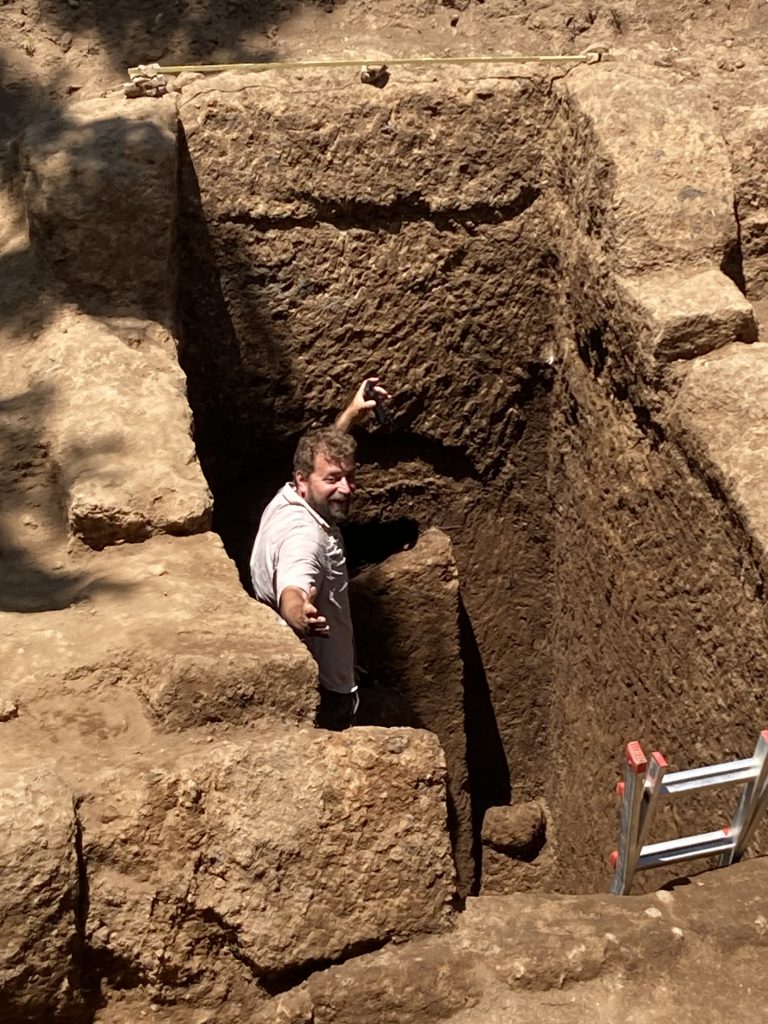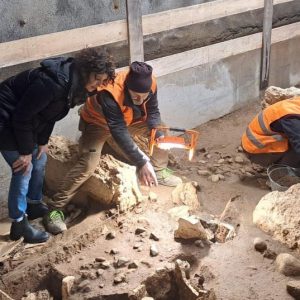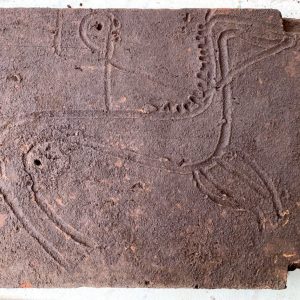A rare, fully sealed Etruscan tomb has been unearthed in central Italy by a team from Baylor University. It is one of the most important archaeological discoveries in recent decades.
The tomb, dating to around 400 B.C., was uncovered by archaeologists working with the San Giuliano Archaeological Research Project (SGARP), a long-running excavation about 70 kilometres northwest of Rome. According to Baylor, this is the first intact burial chamber found at the site since excavations began in 2016.
The discovery is exceptional because, unlike more than 600 other tombs previously documented in the area, this one was found completely sealed and untouched by looters.
“This completely sealed burial chamber represents a rare find for Etruscan archaeology,” said Dr Davide Zori, associate professor at Baylor University and SGARP’s principal investigator. “It is a unique opportunity to study the beliefs and burial traditions of this fascinating pre-Roman culture.”
The chamber, carved directly into the rock and shaped like a small house with pitched roof, held the remains of four individuals laid on stone beds. Surrounding them were more than 110 remarkably preserved grave goods, including ceramic vases, iron weapons, bronze ornaments, and silver hair spools.
Preliminary analysis suggests the tomb may contain two male-female pairs, although further anthropological and genetic testing is underway.
The site is located in the Lazio region, within the municipality of Barbarano Romano. SGARP operates in partnership with Italy’s Ministry of Culture and local institutions, including the Virgil Academy in Rome.
Systematic excavation of Etruscan tomb
Dr Zori emphasised that the discovery was the result of years of careful and systematic excavation rather than chance: “Significant finds come from patience, persistence, and collaborative effort rather than dramatic moments of revelation.”
In addition to its archaeological value, the project serves as a study-abroad opportunity for Baylor students, who participate each summer in excavation and documentation. Students gain experience in excavation, artifact handling, and working within Italian heritage regulations.
“Being part of a project that uncovered an unlooted tomb was extremely surreal,” said Kendall Peterson, a senior anthropology student involved in the dig. “It reminded me that we aren’t just studying artifacts — we’re contributing to a shared cultural heritage.”
SGARP’s finds have drawn interest from local residents, academic guests, and the broader archaeological community. The lab, led by Dr Jerolyn E. Morrison, has hosted open sessions to allow community members to view and discuss the artefacts, reinforcing the importance of shared heritage.
Although the tomb has now been fully excavated, research and analysis will continue in the months and years ahead. The team hopes their findings will offer new insights into the Etruscan civilisation and its cultural practices before the rise of Rome.






